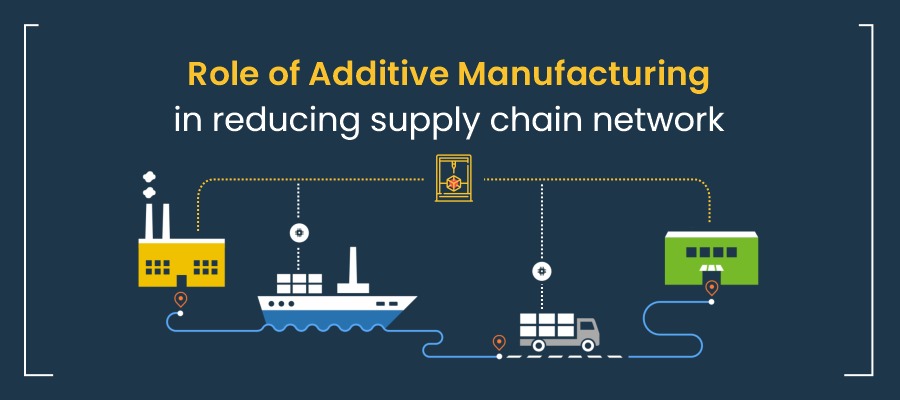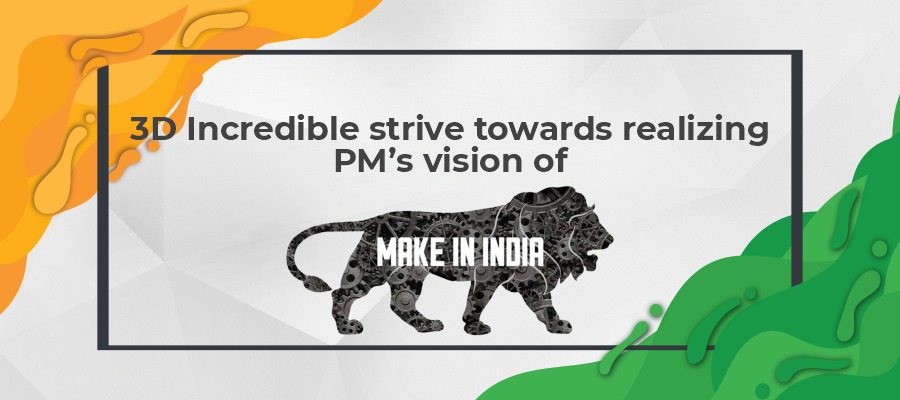Additive manufacturing is an industry term used for the process of joining materials to make objects from 3D model data, usually layer upon layer into a 3-dimensional product.
Adapting to additive manufacturing technologies to progress upon supply chain can offer organizations strong competitive advantage and value. Some of the potential benefits of additive manufacturing to a company are lower costs and risks to greater flexibility and agility.
In the past few years, additive manufacturing (commonly referred as 3D printing) has evolved beyond its original application as a prototyping tool and now plays an important part in the company’s product line and production process. Some industries don’t use this technology to make new products, instead they use it in enhancing supply chain capability by innovating across a whole new section of the supply chain.
Impacts of Additive manufacturing in supply chain network through various aspects are stated below:
Lean Manufacturing
Additive Manufacturing aggregates the bond between the design complexity and the material required, helping the industries towards leaner manufacturing improving the quality of design. This technology has offered manufacturers the power to produce greater performing designs which may be possible applying traditional manufacturing techniques, however the level of material input will be higher and will be closely tied to the product’s design complexity.
AM based designs can amalgamate complex geometries such as lattices and honeycomb structures into traditional product designs, which reduces both the amount of material and weight of the product manufactured. For example, this kind of design requirement is in medical field for manufacturing of parts related to complex bone structure. The complex designs can optimize product strength-to-weight ratios and reduces the amount of raw material pulled in the supply chain.
Simplifying manufacturing process.
Additive manufacturing technology provides the ability to the manufacturers to alter their production process and simplify supply chain by reducing the number of steps in the assembly for the product to complete. It gives the product designers an advantage to redesign parts and consolidate assembly, the sub parts can now be manufactured as one piece through AM. This will prove to leave a great impact over the supply chain by reduced labor cost as it requires fewer labors, less equipment and work–in- process inventory. AM also gives another alteration in manufacturing process by reducing the amount of equipment necessary to manufacture parts. Investment in tooling used in conventional manufacturing techniques such as die casting, injection molding, and forging can make up a significant portion of production costs, and AM can eliminate the need for tooling altogether.
Coexisting supply chain for lower risk
There should not be a choice between additive manufacturing and conventional manufacturing techniques for the manufacturers, the two systems coexist in a supply chain.
On using the two systems together, the supply chain production may perform better. 3D printing improves the performance by reducing supply chain risks, by providing manufacturers and alternative means of production if their primary system is incapacitated.
The use of AM through this way could support uninterrupted deliveries to customers even if the conventional supply chain were disrupted. AM can also be used in a back-up capacity to the existing supply chain.
Digital Inventory:
Keeping physical inventory of the spare parts may become expensive for the companies where large amount of parts are required to be keptin order to keep the production going in any situation. The tough times like this pandemic can delay your spare part manufacturing or import. Keeping Digital inventory will solve these problems and the spare parts can be made available in few days. Modern problems require Modern solutions…!
Process flexibility and faster demand
Supply chain flexibility is defined by its reaction towards the changing requirements. Additive manufacturing can improve the supply chain flexibility in different ways such as, AM improves the time and resources required to design and develop new products and the changeover production resources from one product type to another. Thisfeature of additive manufacturing is beneficial for manufacturers to shorten lead times, react more quickly to changes in customer demand, and reduce required levels of finished goods inventory.
Conclusion
Additive manufacturing technology represents a potentially important aspect for investment by manufacturing industries to improve supply chain importance. Incredible AM Pvt. Ltd. is one such additive manufacturing company leading in producing efficiently designed and 3D manufactured products for engineering and medical related fields. Contact us for details and our available manufacturing options.




